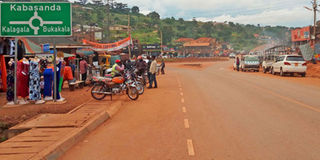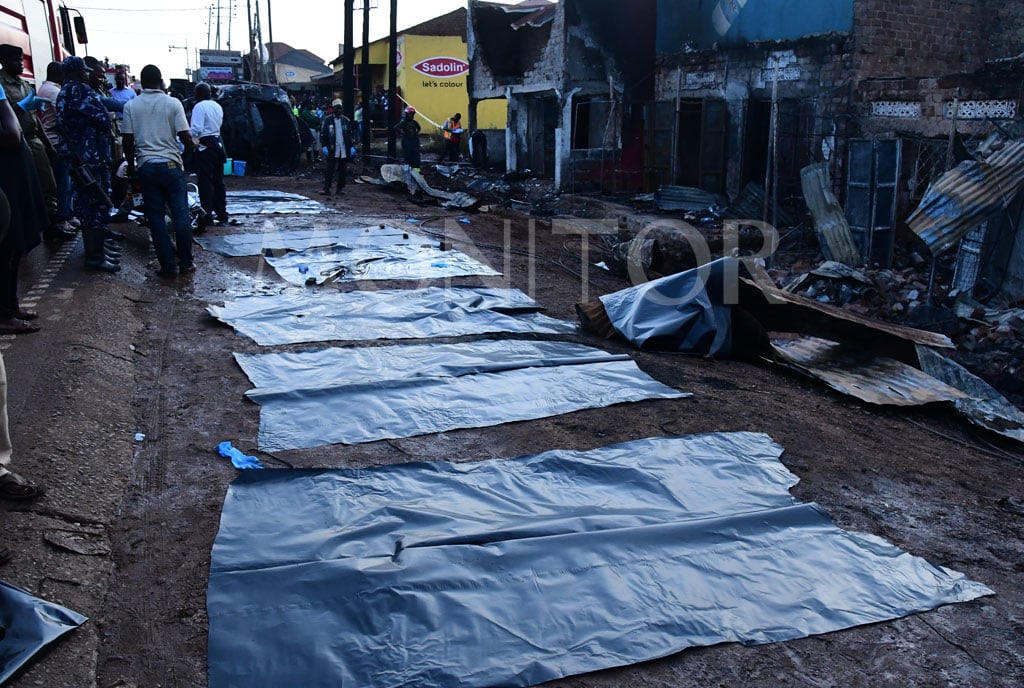Prime
Tarmac road to boost trade in three districts

Development. Road users enjoy a section of the newly tarmacked 65km Mpigi-Kanoni road in Gomba District yesterday. PHOTO BY SADAT MBOGO
What you need to know:
- Reason. The residents are optimistic that they will now spend less time on the road to transport their perishable goods to the market.
Gomba. The construction of 65km Mpigi-Kanoni road is set to the boost trade and ease traffic because it will provide an alternative route from Masaka to Kampala District.
The road stretches from Mpigi Town and goes through three districts of Mpigi, Butambala and Gomba. The last section of the 10km Kanoni-Sembabule–Villa Maria stretch, is also nearing completion.
Motorists who want to avoid the direct Kampala-Masaka highway now have a choice to use the completed paved road with walkways and proper drainage channels.
For the last 45 years, Ismail Mulumba, a resident of Kabasanda Town in Butambala District, has been praying for a day a tarmac road will snake through his town.
“It was very difficult in the past to imagine that one day Butambala would have a tarmac road. Thank God we have seen this happen during our life time,” Mr Mulumba said during an interview on Sunday.
The three districts of Mpigi, Butambala and Gomba are known for ginger and coffee growing while some parts of Gomba rear cattle.
Even before the official commissioning of the road, businesses, including salons, shops, eateries and car washing bays, among others, were springing up on the road.
Mr Godfrey Mafumu Kyeswa, the Butambala District chairperson, is upbeat about the new road.
He says it will facilitate quick transportation of agricultural goods to far markets in Kampala.
In the past, Mr Kyeswa, like many travellers from Kampala to Gomba, could avoid the bumpy and dusty Mpigi–Butambala-Gomba road and use the Kampala-Masaka road and branch off from Mitala Maria through Nakatooke–Bulo and connect to Gomba, which would make the journey longer by 20kms.
He revealed that the road had appeared in several national budgets since the 1990s, but nothing was done up to December 2013 when actual construction works kicked off.
“Despite President Museveni using the same road to go to his farm in Kisozi, the road remained in poor state for years, but we thank him for prioritising it this time round,” he added.
Hajj Muhamoud Kasibante, a cattle trader in Ngomanene Village, Gomba District, said they used to take between two to four hours to Kampala due to the impassable road, but that they currently spend only two hours on the way.
Ms Rehemah Nalubwama, a roadside vendor, said the road is also bringing fortunes to low income earners who have erected a number of stalls to sell their goods to travellers.
Dream come true
Mr Godfrey Kiviiri, the Gomba District chairperson, said: “This is what we have all along been waiting for. Let our people work hard and boost their household incomes using this new road.”
Both Butambala and Gomba districts were carved out of Mpigi District in 2010 and they have a combined population of 260,762 people of which 43,808 (16.7 per cent) are engaged in subsitance farming, while 36,261 (13.8 per cent) entirely depend on cattle keeping for their livelihoods, according to the 2014 National Population and Housing Census.
Cost of roadworks
The road was constructed by Energo Project - Niskogradnja AD at Shs124 billion. President Museveni launched the construction works in July 2014. The construction works involved upgrading the road to a class two paved standard road and widening the carriageway to seven metres and two meters for the shoulders on both sides for pedestrians and pedal cyclists.



